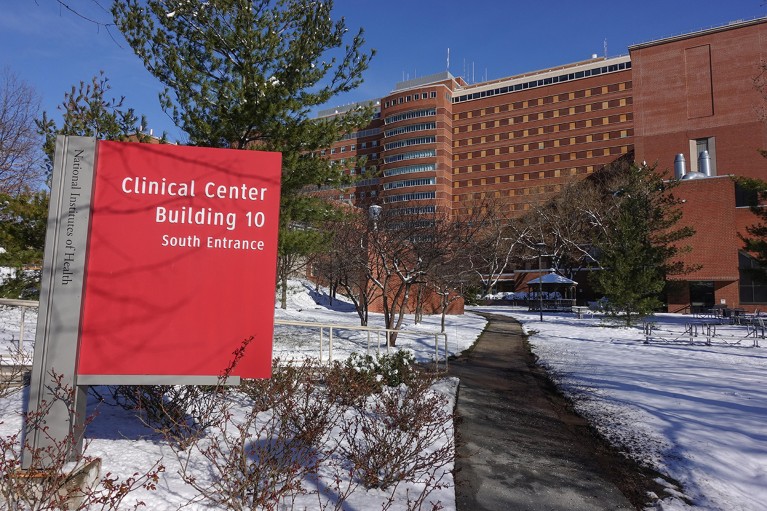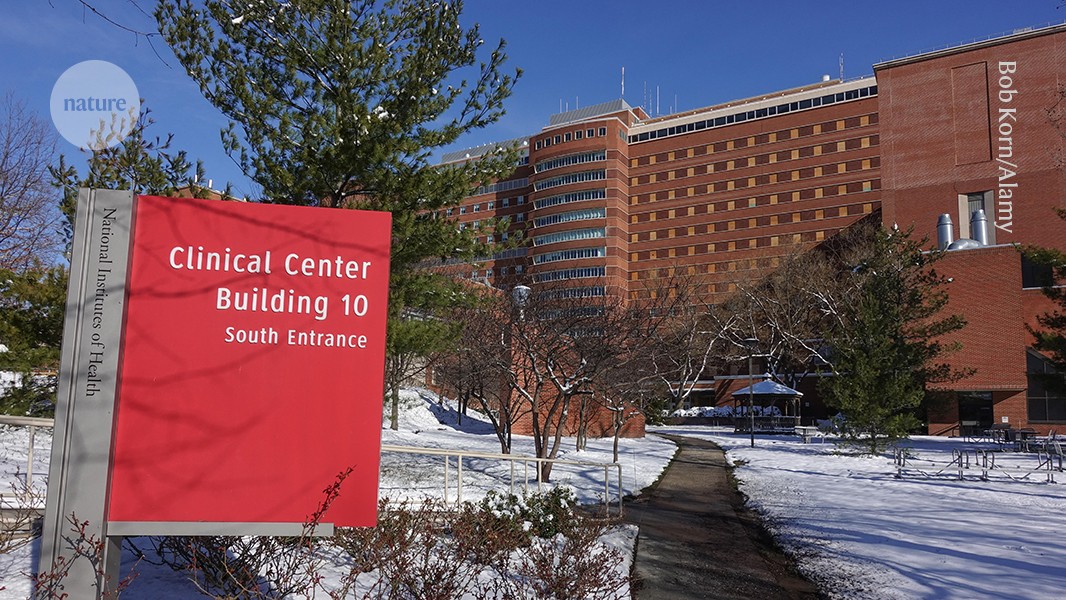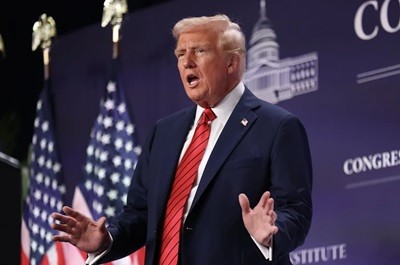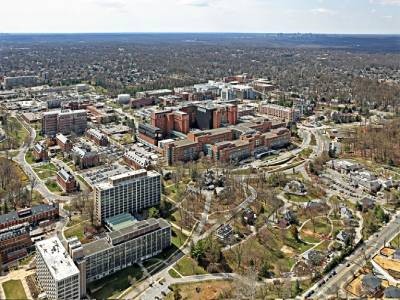
One of the buildings on the US National Institutes of Health’s campus in Bethesda, Maryland, is a hospital dedicated to medical research.Credit: Bob Korn/Alamy
A US judge has blocked a policy that would have, beginning today, slashed billions of dollars of funding annually for US research institutions, including universities and hospitals. The action is in response to a lawsuit filed by 22 US states earlier today contending that the policy was illegal and would cause “cutting-edge work to cure and treat human disease” to “grind to a halt”.
Chaos erupts in US science as Trump’s team declares freeze on federal grants
The policy, announced late on 7 February by the NIH, would have cut ‘research overhead’ to 15% for new and existing grants. Last year, the NIH, the largest public funder of biomedical research in the world, awarded US$26 billion directly to scientists to help them pay workers’ salaries and buy equipment and reagents for their laboratories, while $9 billion went to these overhead, or indirect, costs, to help institutions run their facilities and cover administrative fees. The historical average indirect-costs rate has been about 40%, and goes up to 75% for some institutions.
The steep cut attempted by the NIH comes as the administration of US President Donald Trump, which has partnered with billionaire and entrepreneur Elon Musk, is taking aim at federal spending and attempting to dismantle agencies such as the US Agency for International Development, which funds disease research, prevention and care globally. In recent weeks, Trump’s team tried to freeze federal grants, sowing chaos and confusion throughout the US scientific community, but a federal judge has so far blocked these efforts. Musk said on Friday that wealthy universities getting high rates for indirect costs is “a ripoff” on the social-media platform X, which he owns.
The 15% cap is necessary to “ensure that as many funds as possible go towards direct scientific research costs rather than administrative overhead”, acting NIH director Matthew Memoli said in the memorandum announcing the change.
The attorneys general of the states that sued are Democrats, although Trump, a Republican, won five of those states in last year’s presidential election. The effects of the policy would be “immediate and devastating”, their lawsuit said. “This agency action will result in layoffs, suspension of clinical trials, disruption of ongoing research programs, and laboratory programs.”
Judge Angel Kelley’s order temporarily prevents the NIH from enacting its policy in the 22 states that sued; she set a hearing for 21 February to further consider the states’ petition.
‘Generational restructuring’
Some research institutions had already taken precautionary measures in response to the cut on Monday. In an e-mail seen by Nature, the University of Florida in Gainesville, which has an indirect-costs rate of 52.5%, told its staff members that new awards and the projects they fund at the 15% rate would be frozen, because its accounting department has not been authorized to charge the agency the lower rate.
The US is the world’s science superpower — but for how long?
Researchers say that the policy would upend the biomedical-research enterprise. Alondra Nelson, who directed the US Office of Science and Technology Policy for eight months under former US president and Democrat Joe Biden, wrote on the social-media platform Bluesky that it would lead to a “generational restructuring” of the US research and development ecosystem.
St. Jude Children’s Research Hospital in Memphis, Tennessee, was already losing money on federally funded clinical trials, and had to rely on philanthropy to make up the difference, says Charles Roberts, director of the hospital’s cancer centre. The NIH rate cut would further cost the hospital nearly $40 million each year, he says. “This will likely mean that fewer experimental treatments will get to children,” he adds. “More children will die.”
The NIH referred Nature to its parent agency, the US Department of Health and Human Services (HHS), for comments about the lawsuit. It also did not answer questions from Nature about whether it would give more money to researchers for their direct costs to make up for the cap. HHS spokesperson Andrew Nixon said that the agency does not discuss ongoing litigation and declined to answer Nature’s queries about the lawsuit or about scientists’ concerns about the indirect-costs policy.
A question of cost
‘Direct costs’ paid for by research grants help scientists to buy equipment for specific projects and cover the salaries of lab personnel running them. But research institutions also need to pay for air conditioning, electricity, computing resources, hazardous-waste disposal, administrative personnel and much more to support research projects.
Major biomedical funder NIH poised for massive reform under Trump 2.0
To help pay for these utilities and resources, which are essential to scientific research, the federal government has been adding ‘indirect costs’ to research grants since 1947. These rates ranged from 8% to about 20% until 1965, when individual institutions began negotiating their own rates with HHS. For example, on a $1.2-million grant, a 20% indirect-costs rate would mean that $200,000 goes to the university to pay for overhead.
These rates have risen steadily since the 1960s, in part because of an increasing number of regulations governing laboratory research and how federal funds are spent. The regulations include measures to ensure data privacy, to protect animal welfare and human participants in research studies, and to govern collaborations with researchers in other countries.





